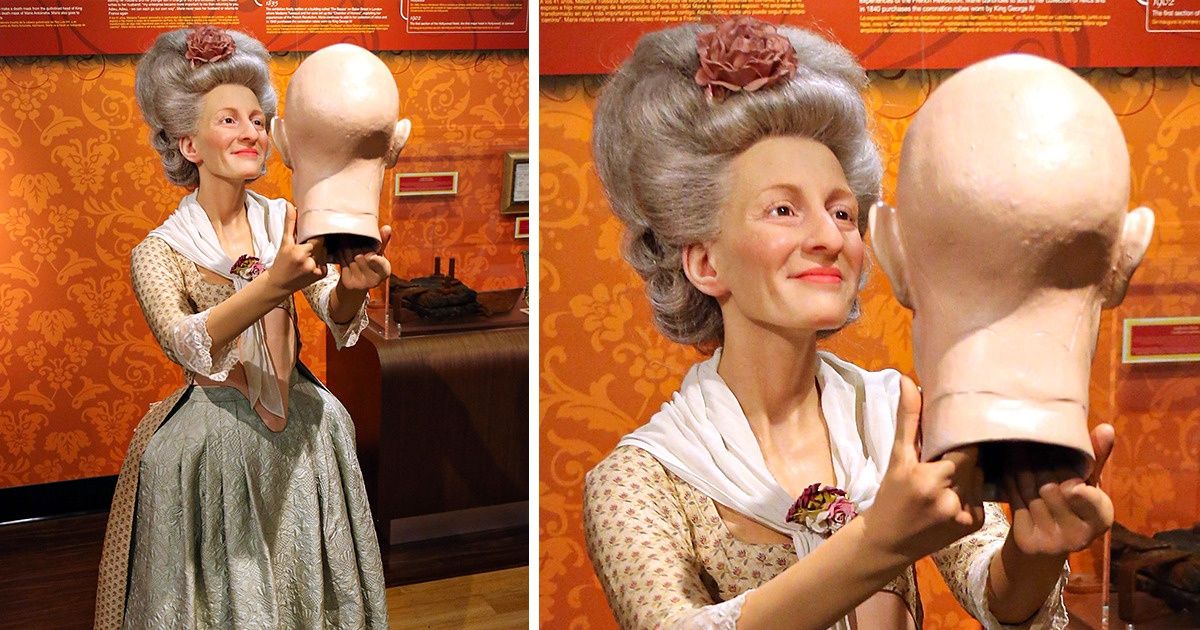I actually knew nothing about her except that she has a museum filled with wax statues
The Story of Marie Tussaud and Her Wax Empire That Can Send a Chill Down Your Spine

It would probably be difficult to find a person who has never heard of Marie Tussaud and her wax sculptures. Her wax museum has become one of the chief places of interest in London that, like a magnet, attracts tourists from all over the globe. Looking at the wax statues of celebrities and judging whether they manage to grasp the features of the original or not is a kind of entertainment that many London visitors enjoy.
But the wax art by Marie Tussaud did not always look like this. There’s a thrilling and somewhat eerie story behind it, and here at Bright Side, we can’t wait to share it with you.
Marie Tussaud’s early life and wax modeling talent
Madame Tussaud, a portrait study by John T. Tussaud
Madame Tussaud was born Marie Grosholtz in 1761 in Strasbourg, France, shortly after her father, Joseph Grosholtz, was killed in the Seven Years’ War. She spent her childhood in Bern, Switzerland, in the house of the anatomist and wax modeler, Dr. Philippe Curtius, where her mother worked as a housekeeper. Curtius, whom Marie called her uncle, taught her the art of wax modeling.
At the age of 15 or 16, she did her first waxwork — the figure of the philosopher, Voltaire. Later on, Tussaud created many figures of famous people of those times, including Jean-Jacques Rousseau and Benjamin Franklin. Marie also became a favorite at the palace of Versailles and taught modeling to Elizabeth, the sister of Louis XVI, the King of France.
The French Revolution and Madame Tussaud’s special role
A wax figure of Madame Marie Tussaud holding one of her creations
In 1789, when the French Revolution broke out, both Marie Tussaud and her teacher, Philippe Curtius, were accused of the royal sympathies. Marie was arrested and her head was shaved to prepare her for the execution, but luckily, she was released thanks to one of Curtius’ supporters.
During the hard times of the revolution, Tussaud and Curtius got a new, gruesome role — they would make death masks of the people who were executed. Back in those days, photography still didn’t exist, and such masks were created to keep the memory of the person alive after their death or were used further for painting portraits.
It’s believed that during this sad mission, Marie created the masks of Louis XVI, Marie Antoinette, and Jean-Paul Marat.
The fame and legacy of Madame Tussaud
A wax figure of Marie Tussaud
After Philip Curtius’ death in 1794, Marie Tussaud became the heir of his waxworks. In 1795, Marie married civil engineer, François Tussaud. The couple had 3 children, a girl who died after birth and 2 sons, Joseph and François. The relationship between the spouses grew tense, and when in 1802, German illusionist Paul Philidor suggested Marie go to London and make a joined show, she agreed and left home with one of her sons. In London, Marie Tussaud, a talented wax artist in her forties, decided to start a business of her own.
Madame Tussaud organized a touring exhibition of her waxworks throughout the British Isles. In every city, her skillful works attracted many curious visitors and brought her fame and profit. In 1822, Marie’s second son, François, joined his mother and brother and became part of the family wax business.
In 1835, Madame Tussaud gave her exhibition a permanent home in London. The museum, Madame Tussauds, still features some of the waxworks created by Marie Tussaud herself. With time, this mesmerizing collection of wax figures expanded and is now represented not only in London, but in Amsterdam, Beijing, Berlin, Sydney, Hong Kong, San Francisco, Shanghai, and many other cities.
What do you think of the story of Marie Tussaud and her wax empire? Have you ever visited Madame Tussauds? If yes, what was your impression of the museum?
Comments
Related Reads
12 Paintings That Perfectly Illustrate the Crazy World We Live In

11 Times Quiet Kindness Lit a Spark in Someone’s Eyes Again

12 Moments That Prove the Simple Power of Kindness Can Move Mountains

I Refused to Take My Ex Back, and My MIL Made Sure I’d Regret It

12 Stories That Capture the Bittersweet Beauty of Blended Families

I Signed Up for a “Flexible Job” — I Got a Low Salary and Zero Boundaries Instead

15 Stories That Prove the Best Families Are the Ones We Choose

10 Stories Where a Small Act of Kindness Made Someone Feel Truly Seen

My Mom Lent Me $10,000—I Refuse to Pay It Back, I Already Paid for My Awful Childhood

I Refuse to Sacrifice My Life to Care for My Sick Grandmother — I’m Not a Doormat

My Rich Friend Demanded I Bake Her Wedding Cake for Free, and My Refusal Almost Ended Our Friendship

I Found the Nanny Putting My Granddaughter at Risk, Yet My DIL Sees Me as the Enemy



